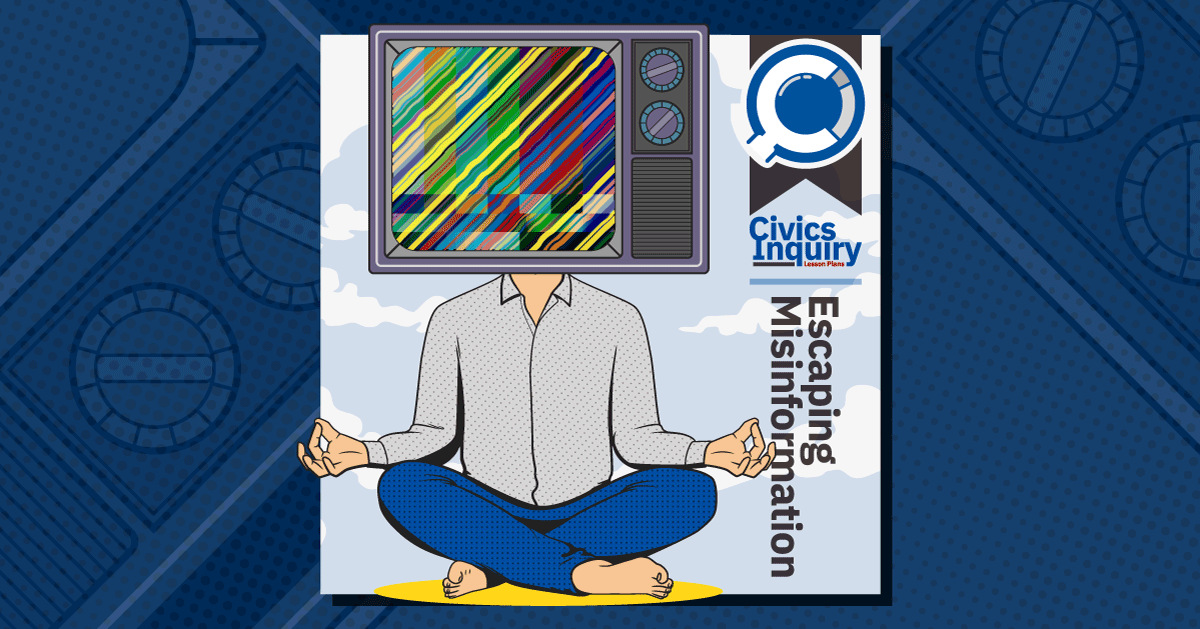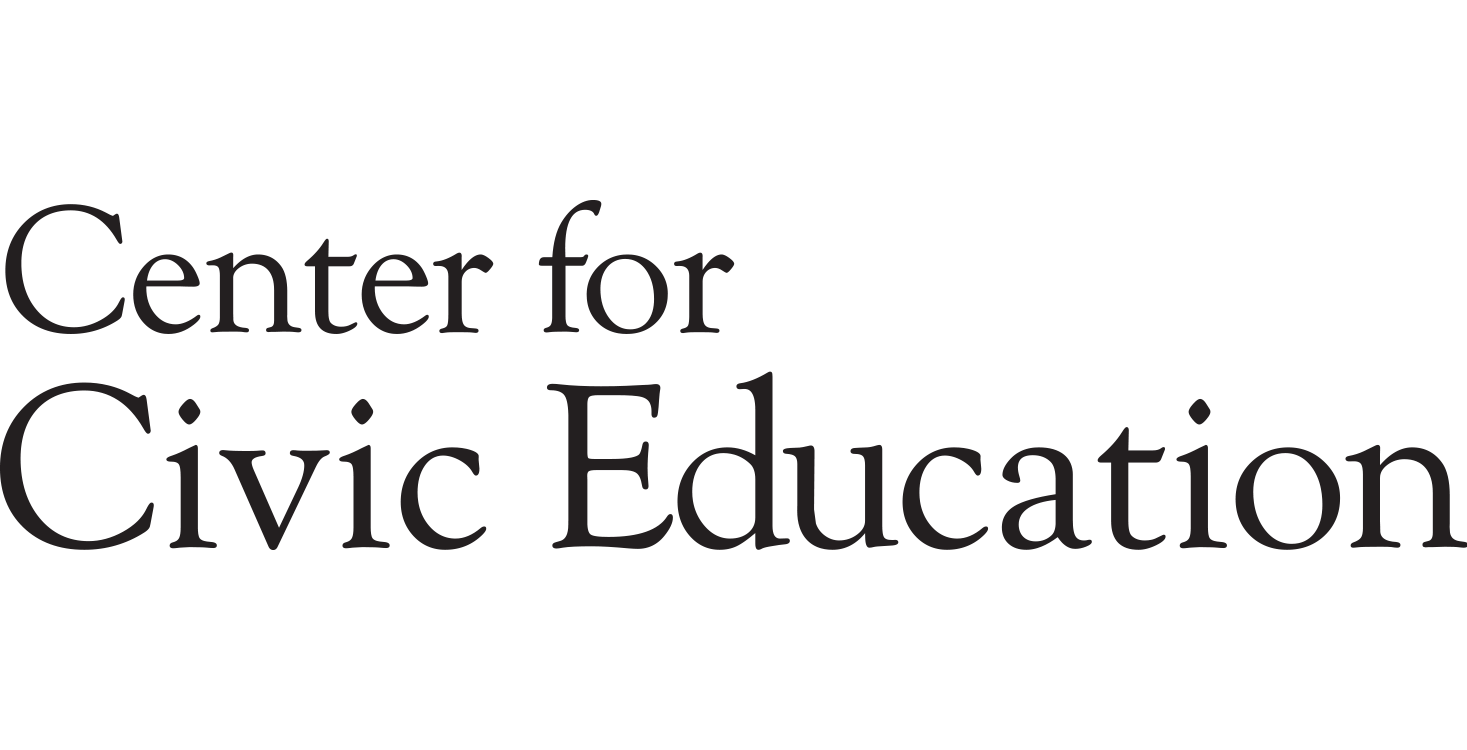
Escaping Misinformation
Consider the sheer volume of information adults and children are exposed to daily, from news and entertainment outlets to social media, texts, and memes. Everyone could benefit from a set of skills and strategies to employ when engaging with each piece of media. Even our youngest media consumers need a toolkit they can turn to when evaluating if a source is reliable. With media literacy tools, students can critically engage with the information they consume and lift up their voices as active and informed citizens.
Lesson Plan: Day 1
- Greet students upon entry to the classroom and welcome them to social studies.
- Ask students to share from what sources they get their news and daily information. For example, where do you get a weather report? How do you find out if school is closed due to a snowstorm? Where would you find out the results of the presidential election?
- Record student responses on an anchor chart.
- Tell students that today’s activities will begin with a short video clip about a recent discovery that has been reported by the BBC (British Broadcasting Corporation), which is generally considered a reliable source for news.
- As students watch, they will note their observations using the See, Think, Wonder graphic organizer.
- Preview the See, Think, Wonder graphic organizer together to ensure students understand the purpose and expectations.
- Play the Flying Penguins video clip.
- At the conclusion of the video clip, allow students to share what they recorded on the See, Think, Wonder organizer.
- Ask students if they feel the BBC video clip was reliable or trustworthy and solicit a few reasons for their opinion.
Universal Design for Learning Guidelines (UDL)
- Desks arranged in tables/clusters are recommended to facilitate better student collaboration.
- Allow sufficient wait time for students to formulate answers.
- Consider allowing students trio time to formulate answers.
- Play the video a second time to support comprehension as needed.
- Consider allowing students to utilize a speak-to-type feature to record their answers on the graphic organizer.
- Alternatively, students can draw sketches to illustrate ideas, topics, or items on the graphic organizer.
- Utilize the subtitles/closed captions or show the transcript function if viewing the video via YouTube.
- Teacher may display the See, Think, Wonder graphic organizer and record student responses.
Multilingual Learners (ML)
- Explore subtitle options and change the language if viewing the video via YouTube.
- Multilingual learners (MLs) are best supported by collaborating in groups of three.
Social-Emotional Learning (SEL)
- Students may practice teamwork by collaborating on the graphic organizer.
- Introduce the compelling question: Should I believe everything I see and hear online?
- Ask students to share their thoughts on the compelling question, capturing student responses on a T-chart.
- Consider taking an informal class poll on the compelling question.
- Tell students we will now revisit the flying penguins and play The Making of Penguins April Fool video.
- Allow for a brief follow-up discussion about the reveal video.
UDL
- Ask a student to rephrase the compelling question for the class.
ML
- Provide the compelling question translated into the native language of students as needed.
- Explore subtitle options and change the language if viewing the video via YouTube.
Civic Dispositions & Skills
- Critical thinking
- Media literacy
- Facilitate a class discussion by asking the following questions:
- Why do you need to be sure that what you are seeing, hearing, or reading is reliable, truthful, and trustworthy?
- How can you check that images, videos, and articles are accurate and reliable?
- What can you do to check the facts?
- Tell the class that today we will examine ways to ensure the news articles, videos, and websites we use are reliable and trustworthy.
- Review lesson vocabulary as needed.
UDL
- Allow sufficient wait time for students to formulate answers.
- Consider allowing students trio time to formulate answers.
ML
- Provide discussion questions translated into students’ native language in advance of class discussion to provide MLs an opportunity to participate.
- MLs are best supported by collaborating in groups of three.
Civic Dispositions & Skills
- Informed citizen
- Media literacy
- Tell the class that we are now exploring strategies to identify misinformation and misleading information.
- Display the Escape Misinformation slide deck. For this Elaborate portion of the lesson, you will use slides 1–11.
- Tell students that to investigate, we will ask questions about the information we are consuming.
- In slide two, provide an overview of each step that will be examined and each question we ask as we work to escape misinformation.
- In slide three, discuss why it is important to consider the source of the information. Revisit the anchor chart from the beginning of the lesson, where students share the sources of their news and daily information. Explain that some sources are more reliable and trustworthy than others.
- In slide four, ask students why the intended audience matters in what kind of news and information is reported. For example, the audience for the Highlights magazine is children.
- In slide five, discuss why the date of the publication should be reviewed. Additionally, discuss the format of the presentation: in other words, how is it being shared? For example, which is likely to be more reliable—a meme on social media or a newspaper article? It is important to note that not all newspapers are necessarily reliable, and that is why we need to be detectives and investigate various details about the information being shared.
- In slide six, explain why you need to fact-check. For example, if you wanted to confirm the amount of snowfall, where might you find that data?
- In slide seven, discuss why it is important to corroborate information. For example, we can verify the context of the New York Times article against the National Public Radio (NPR) article about Justice Jackson’s swearing-in ceremony.
- In slide eight, discuss the need to consider why the news article or information was created. We need to consider its purpose.
- In slide nine, play 5 Ways to Spot Fake News as a quick summary, if time allows.
- In slide ten, tell students that our strategies can be unscrambled to spell out “ESCAPE.”
- In slide 11, students apply their ESCAPE skills using the Practice Your Escape organizer and by examining one of the three articles:
- Circulate around the room, encouraging each group, observing progress, and redirecting as needed.
- Return class to full-group format to briefly discuss key discoveries with each article.
UDL
- Allow sufficient wait time as each slide is shared so that students may formulate answers or generate questions.
- Consider allowing students trio time to formulate answers and generate questions.
- For the activity in slide 11, review the Practice Your Escape organizer to ensure students understand expectations for completion.
- For the activity in slide 11, allow students to work in teams of three to collaborate on applying the media literacy skills.
ML
- Provide articles in slide 11 translated into the students’ native language as needed.
- Provide ESCAPE media literacy strategies and Practice Your Escape organizer translated into students’ native language as needed.
- MLs are best supported by collaborating in groups of three.
SEL
- Students may practice teamwork by collaborating on graphic organizer.
- Students will develop their responsible decision-making by gathering media literacy skills shared in the slide deck, including the ability to make caring and constructive choices about personal behavior and social interactions across diverse situations by examining and applying media literacy skills.
Civic Disposition & Skills
- Informed citizen
- Media literacy
Extending Learning
- Students may extend learning by examining an additional article featured in slide 11 and applying the ESCAPE media literacy skills.
- For students ready to elevate learning on media literacy, consider discussing media bias using the All Sides Media Bias Chart.
- Continue the Escape Misinformation slide deck, starting on slide 12.
- Tell students they must use their media literacy skills in our escape room activity.
- Display slides 13–18, pausing for students to examine each news headline and source. Encourage students to apply the ESCAPE skills.
- As you display each slide, students will determine if the source is reliable. Tell students to place a T for trustworthy or a M for misinformation in the corresponding box at the bottom of the Practice Your Escape organizer. Alternatively, students could move to one side of the room if T is their choice or to the other side of the room if M is their choice.
- Display slide 19 and congratulate your students on demonstrating the skills and knowledge of media literacy scholars!
- In slide 20, revisit the compelling question: Should I believe everything I see and hear online? Conduct another informal poll to determine if student opinion has changed since the compelling question was first introduced at the start of this lesson.
- Facilitate a brief discussion about why it is important for media consumers to test the reliability and trustworthiness of the information they see and hear. Discussion questions may include:
- What role do you play in consuming and creating media content?
- Does everyone have a responsibility to check the reliability of sources and stories?
- What should you do if you find a news article or other media source that is not reliable?
- Consider utilizing the Inquiry Reflection Tool with students to promote self- and group observations and reflection.
- Teachers may measure student mastery using the Assessment Rubric.
UDL
- Allow sufficient wait time as each slide is shared so students can formulate answers or generate questions.
- Consider allowing students trio time to formulate answers and generate questions.
- Revisit the Practice Your Escape organizer to support students’ use of ESCAPE media literacy strategies.
- Teacher may provide hints on each slide, directing student attention to the website or media outlet name, date of article, content, etc.
ML
- Provide articles in slide 11 translated into the students’ native language as needed.
- MLs are best supported by collaborating in groups of three.
SEL
- Students will demonstrate their responsible decision-making by applying media literacy skills to the escape room activity.
- Students will demonstrate their ability to make caring and constructive choices about personal behavior and social interactions by examining and applying media literacy skills.
Civic Dispositions & Skills
- Critical thinking
- Media literacy
- Responsible decision-making
Extending Learning
- Students may extend learning by using their media literacy skills in assessing two articles on the same topic that present differing facts, such as the response to COVID-19 vaccines or the cause of sea-level rise. Allow students to present their findings to a classmate.







